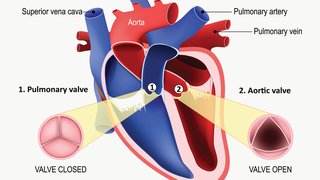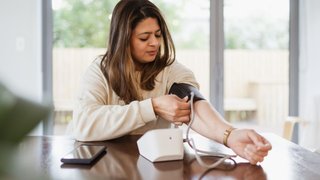
Heart disease is often thought of as a “man’s disease,” but that’s just not true. In fact, one in four women in the U.S. dies from heart disease, and coronary artery disease is the No. 1 killer of women in this country.
The best-case scenario is for women to reduce their heart disease risk factors early in life. That said, it’s never too late to protect your heart. My patient Susanne Orman is living proof. In the summer of 2017, just shy of her 71st birthday, she decided to start exercising to prepare for a vacation with friends. She was overweight and had a few other classic risk factors for heart disease, such as:
- A sedentary lifestyle
- Diabetes
- High blood pressure
Susanne noticed strange symptoms when she exercised, which she mentioned to Asra Kermani, M.D., her endocrinologist. Dr. Kermani recommended that she see a cardiologist right away and referred her to me. I’ve invited Susanne to share her story of how the simple act of preparing for vacation potentially saved her life.
Susanne’s story: My first steps toward heart health
I was excited about the trip to Hawaii that my friends and I had planned, and I wanted to be in better shape when we went. But when I started to walk for exercise, I couldn’t go 100 feet before I got this unusual feeling in my chest and shortness of breath. I thought, “My gosh, I’m more out of shape than I thought!”
I had my regular diabetes checkup with Dr. Kermani the next week, so I mentioned my symptoms to her. Her head shot up. She looked me in the eye and asked, “What did they tell you about this in the emergency room?” When I told her I hadn’t gone to the ER, she said she wanted me to go see a cardiologist immediately. Her receptionist, Kimmee, quickly got me in to see Dr. Lonergan.
I felt fine other than that brief discomfort, but I went to the appointment anyway. Dr. Lonergan immediately was worried about me. She said my symptoms and risk factors suggested I might have coronary artery disease. Ordinarily, Dr. Lonergan said, she would confirm that with a stress test. But we agreed that I needed help right away. We decided to go straight to an angiogram, which is a test that cardiologists use to see inside the blood vessels.
I avoided a potential heart attack
During my angiogram, the heart team found a 99 percent blockage in my heart’s left anterior descending (LAD) coronary artery, which is the most important blood vessel that supplies blood to the heart. Blockages in this artery can cause a type of heart attack known as a “widowmaker” because people usually don’t survive it.
Two days before I turned 71, the heart team cleared the blockage and placed a stent in my artery. I call the stent my birthday present! Several months after the procedure, I remembered that the LAD coronary artery is the same one that had ruptured and killed my mother – at almost exactly the age I am now. It hadn’t dawned on me until then that I had such a strong history of heart disease in my family.
Dr. Lonergan recommended that I do cardiac rehabilitation after my stent placement. It was 36 sessions that took place over about nine weeks. During rehab, the team designed a personalized exercise program with me and taught me how to safely do all my exercises. Rehab wrapped up just in time for me to go on my trip to Hawaii with my friends. We had a great time!
My heart care journey continues
Both Dr. Lonergan and Dr. Kermani encouraged me to stick with my exercise routine after cardiac rehab was over. I joined a training studio in my town. However, instead of working out three days a week as I did during cardiac rehab, I now work out five days a week. The studio’s owner is a certified personal trainer who has experience working with people who have physical limitations. She adapts exercises for me based on my arthritis and other conditions. I feel like I’m 35 years younger. It’s incredible!
If other women out there take one thing away from my story, it should be this: Get checked out for heart disease. Don’t be afraid to go to the doctor, especially if heart disease is prevalent in your family. Do what your doctor says. I knew I had some risk factors, but I needed that kick in the behind from Dr. Kermani. I’m so glad I listened to what both she and Dr. Lonergan said, and I’m grateful for what they’ve done for me. I credit my medical team with my recovery. They helped me focus on goals that keep me motivated to continue exercising.
Exercise and early recognition
Susanne’s continued dedication to exercise is exactly what we want heart patients to do. Exercise does more than just lower your risk of heart disease. I tell my patients that it’s like surveillance on yourself. It takes a sedentary person longer than someone who’s active to realize something’s wrong with their heart. That’s likely why Susanne didn’t notice any symptoms until she started to exercise.
I’m so proud of Susanne. She’s living proof of how important it is to commit to a healthy lifestyle that includes exercise, as well as ongoing care from a cardiologist who can help reduce heart risks in the future.
Request an appointment with a cardiologist to find out if you’re at risk for heart disease.











